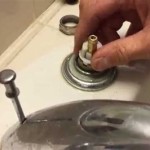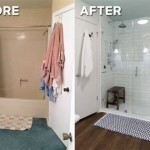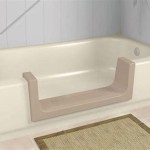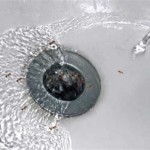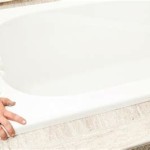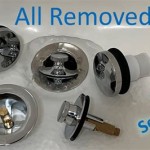How To Clean A Bathtub With Baking Soda
Maintaining a clean bathtub is essential for hygiene and overall bathroom aesthetics. Over time, bathtubs can accumulate soap scum, hard water stains, and general dirt, making them appear unsightly and potentially harboring bacteria. While numerous commercial cleaning products are available, baking soda offers a natural, effective, and affordable alternative. This article provides a detailed guide on how to clean a bathtub using baking soda, outlining various methods and addressing common issues encountered during the cleaning process.
Understanding Baking Soda's Cleaning Properties
Baking soda, also known as sodium bicarbonate, is a mild alkali with gentle abrasive properties. This unique combination makes it an ideal cleaning agent for bathtubs. Its alkaline nature helps to neutralize acidic stains, such as soap scum and hard water deposits, loosening them from the bathtub surface. The slightly abrasive texture allows for gentle scrubbing without scratching the enamel or other materials commonly used in bathtub construction. Furthermore, baking soda is non-toxic and environmentally friendly, making it a safe choice for households with children and pets.
Baking soda’s deodorizing properties are also noteworthy. It effectively absorbs and neutralizes odors, leaving the bathtub fresh and clean after the cleaning process. This is particularly beneficial for bathtubs that may have lingering odors from mildew or stagnant water.
Using baking soda also avoids the harsh chemicals found in many commercial cleaners. These chemicals can be irritating to the skin and respiratory system. Baking soda provides a gentler, safer cleaning alternative without compromising effectiveness.
Method 1: Basic Baking Soda Cleaning
This method is suitable for general bathtub cleaning and light stain removal. It involves creating a simple baking soda paste and applying it directly to the bathtub surface.
Materials Required:
- Baking soda
- Water
- Spray bottle (optional)
- Sponge or scrub brush
- Clean cloth
Step-by-Step Instructions:
- Prepare the Baking Soda Paste: In a small bowl, mix baking soda with a small amount of water to form a thick paste. The consistency should be similar to toothpaste. If preferred, a spray bottle filled with water can be used to moisten the bathtub surface before applying the dry baking soda.
- Apply the Paste: Using a sponge or scrub brush, apply the baking soda paste evenly to the entire surface of the bathtub. Pay particular attention to areas with visible stains or soap scum buildup. For areas with heavier stains, apply a thicker layer of paste.
- Let it Sit: Allow the baking soda paste to sit on the bathtub surface for at least 15-20 minutes. This allows the baking soda to penetrate and loosen the dirt and grime. For stubborn stains, the paste can be left on for up to an hour.
- Scrub the Bathtub: After the soaking period, use a sponge or scrub brush to scrub the bathtub thoroughly. Apply moderate pressure, focusing on areas with stains or buildup. The baking soda's mild abrasive properties will help lift the dirt and grime.
- Rinse Thoroughly: Rinse the bathtub thoroughly with warm water to remove all traces of baking soda. Use a showerhead or a bucket of water to ensure all surfaces are clean.
- Dry the Bathtub: Use a clean cloth to dry the bathtub completely. This helps prevent water spots and further buildup of soap scum.
This method is effective for routine cleaning and maintaining the cleanliness of the bathtub. Regular use can prevent the accumulation of stubborn stains and keep the bathtub looking its best.
Method 2: Baking Soda and Vinegar Power Cleaning
For bathtubs with more stubborn stains or significant soap scum buildup, combining baking soda with vinegar can provide a more powerful cleaning action. The chemical reaction between baking soda and vinegar creates a fizzing action that helps to loosen even the most persistent stains.
Materials Required:
- Baking soda
- White vinegar
- Spray bottle
- Sponge or scrub brush
- Clean cloth
Step-by-Step Instructions:
- Prepare the Bathtub: Lightly wet the entire surface of the bathtub with water. This helps the baking soda adhere to the surface.
- Apply Baking Soda: Sprinkle a generous amount of baking soda over the entire surface of the bathtub, focusing on areas with stains or buildup.
- Spray with Vinegar: Fill a spray bottle with white vinegar and spray it over the baking soda-covered surface. The mixture will begin to fizz and bubble.
- Let it Sit: Allow the baking soda and vinegar mixture to sit on the bathtub surface for 20-30 minutes. The fizzing action helps to loosen the dirt and grime. For very stubborn stains, the mixture can be left on for up to an hour.
- Scrub the Bathtub: After the soaking period, use a sponge or scrub brush to scrub the bathtub thoroughly. The fizzing action will have loosened much of the dirt and grime, making it easier to remove.
- Rinse Thoroughly: Rinse the bathtub thoroughly with warm water to remove all traces of baking soda and vinegar. Ensure all surfaces are clean.
- Dry the Bathtub: Use a clean cloth to dry the bathtub completely. This helps prevent water spots and further buildup of soap scum.
When using this method, ensure proper ventilation in the bathroom, as the vinegar fumes can be strong. This method is particularly effective for removing hard water stains and soap scum.
Method 3: Baking Soda and Hydrogen Peroxide for Mold and Mildew
If the bathtub has mold or mildew growth, combining baking soda with hydrogen peroxide provides an effective cleaning and disinfecting solution. Hydrogen peroxide is a mild bleaching agent that can kill mold and mildew spores while also helping to remove stains.
Materials Required:
- Baking soda
- Hydrogen peroxide (3% solution)
- Spray bottle
- Sponge or scrub brush
- Gloves
- Clean cloth
Step-by-Step Instructions:
- Prepare the Mixture: In a small bowl, mix baking soda with enough hydrogen peroxide to form a thick paste. The consistency should be similar to toothpaste.
- Apply the Paste: Using a sponge or scrub brush, apply the baking soda and hydrogen peroxide paste to the areas affected by mold or mildew. Ensure the affected areas are completely covered.
- Let it Sit: Allow the paste to sit on the affected areas for at least 30 minutes. For severe mold or mildew growth, the paste can be left on for up to an hour.
- Scrub the Affected Areas: After the soaking period, use a sponge or scrub brush to scrub the affected areas thoroughly. The hydrogen peroxide will help to kill the mold and mildew spores, while the baking soda's abrasive properties will help to remove them.
- Rinse Thoroughly: Rinse the bathtub thoroughly with warm water to remove all traces of baking soda and hydrogen peroxide. Ensure all surfaces are clean.
- Dry the Bathtub: Use a clean cloth to dry the bathtub completely. This helps prevent further mold or mildew growth.
When using this method, it is recommended to wear gloves to protect the skin from irritation. Additionally, ensure proper ventilation in the bathroom. Avoid mixing hydrogen peroxide with vinegar, as the combination can create harmful fumes. This method is particularly effective for disinfecting and removing mold and mildew from the bathtub.
It is also important to address the underlying cause of the mold or mildew growth, such as poor ventilation or excessive moisture. Improving ventilation and regularly drying the bathtub after use can help prevent future mold and mildew growth.
Addressing Common Issues and Considerations
While baking soda is generally a safe and effective cleaning agent, there are a few common issues and considerations to keep in mind when cleaning a bathtub with baking soda:
Scratching: Although baking soda is only mildly abrasive, aggressive scrubbing on certain bathtub surfaces, such as acrylic or fiberglass, can potentially cause scratches. To avoid scratching, use a soft sponge or microfiber cloth and apply gentle pressure when scrubbing. Test the baking soda paste on an inconspicuous area of the bathtub first to ensure it does not cause any damage.
Residue: If the baking soda is not rinsed thoroughly, it can leave a white residue on the bathtub surface. To prevent this, ensure the bathtub is rinsed thoroughly with warm water after scrubbing. Use a showerhead or a bucket of water to remove all traces of baking soda. Drying the bathtub with a clean cloth can also help prevent residue buildup.
Stubborn Stains: For extremely stubborn stains, multiple applications of baking soda may be necessary. Consider increasing the soaking time or using a combination of baking soda and vinegar for a more powerful cleaning action. Alternatively, a commercial stain remover specifically designed for bathtubs may be required for particularly resistant stains like rust. If the stain persists, professional cleaning services might be necessary.
Ventilation: When using baking soda in combination with vinegar or hydrogen peroxide, ensure proper ventilation in the bathroom. Open a window or turn on the exhaust fan to prevent the buildup of fumes. This is particularly important when using vinegar, as its fumes can be strong and irritating.
Material Compatibility: While baking soda is generally safe for most bathtub materials, it is always a good idea to test it on an inconspicuous area first to ensure it does not cause any damage. Some older bathtubs may have delicate enamel surfaces that are more prone to scratching. Always err on the side of caution and use gentle scrubbing techniques.
By following these tips and considerations, individuals can effectively clean their bathtubs with baking soda while minimizing the risk of damage or other issues. Baking soda remains a versatile and reliable option for maintaining a clean and hygienic bathroom environment.

How To Clean A Bathtub Deep And After Each Use

Baking Soda Bleach And Vinegar Which Is Best For A Clean Bathtub 2024

17 Clever Ways To Clean Everything With Baking Soda

3 Ingredient Magic Tub Cleaner No Scrub Low Odor Natural Ish Hometalk

Bath Cleaning How To Clean A Bathtub With Baking Soda Express Co

How I Clean My Bathtub Dawn Baking Soda Vinegar Does It Work

How To Clean A Jetted Tub No More Gunk In The Water Bob Vila

Bath Cleaning How To Clean A Bathtub With Baking Soda Express Co

3 Ways To Clean An Acrylic Tub Wikihow

How To Deep Clean A Bathtub Hometalk
Related Posts

